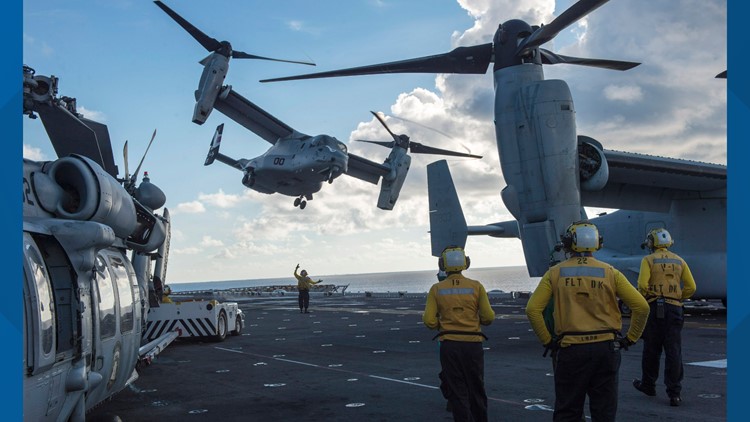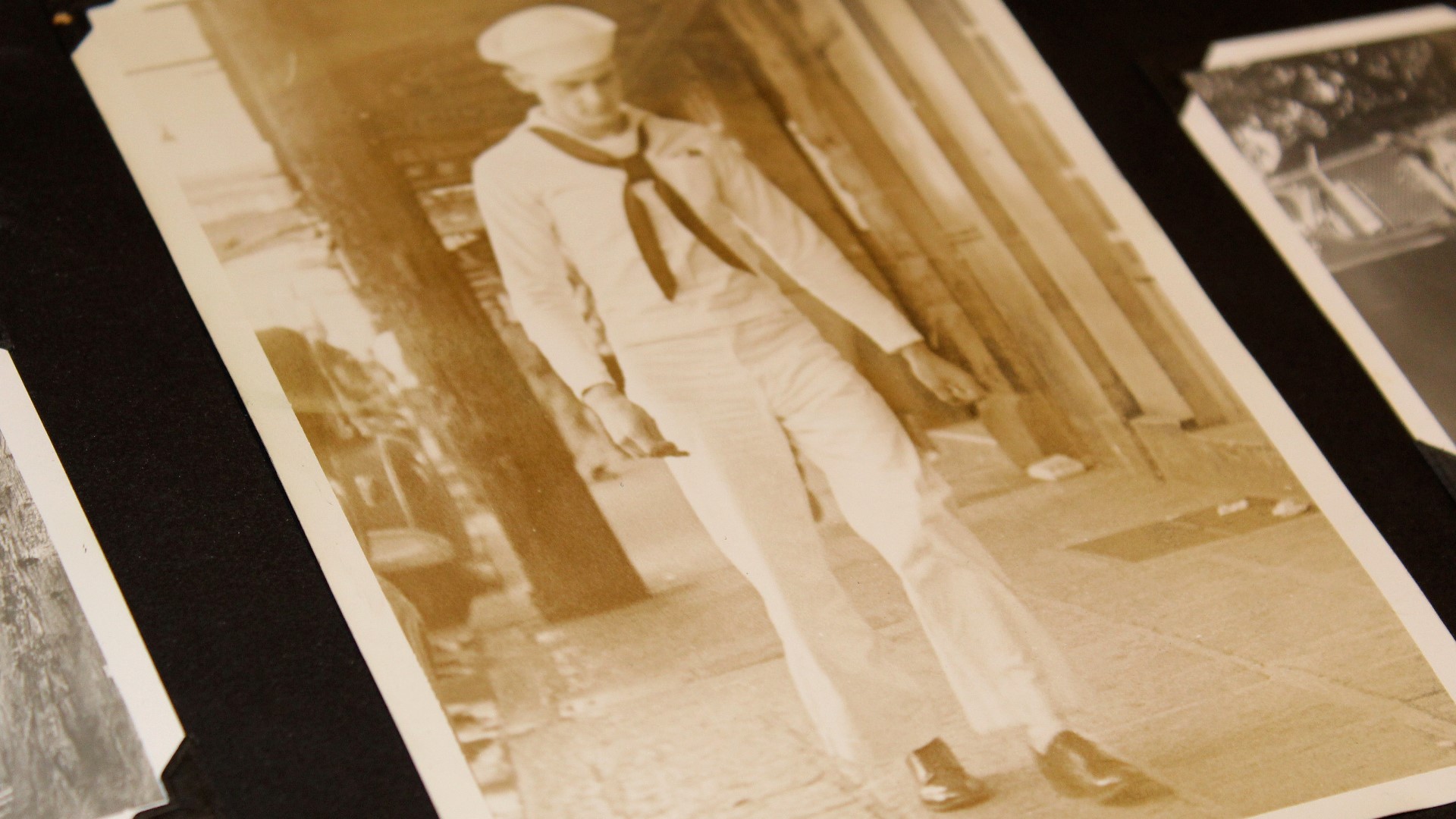CORPUS CHRISTI, Texas — The U.S. Navy’s first new accession CMV-22B Osprey pilot is set to graduate from flight school after earning his naval aviator designation at Naval Air Station (NAS) Corpus Christi Dec. 6.
Ensign Caleb Nicholson completed flight training with Training Air Wing (TRAWING) 4 and will receive his Wings of Gold during a ceremony at the Catalina Club on base. He completed Primary flight training with the “Rangers” of Training Squadron (VT) 28 at NAS Corpus Christi, after which he reported to the “Vigilant Eagles” of Helicopter Training Squadron (HT) 18 at NAS Whiting Field, Florida, for Intermediate helicopter training.
He reported to Training Air Wing 4 and subsequently to the “Stingrays” of VT-35 for Advanced training. VT-35 is one of two Advanced training squadrons for multi-engine aircraft, however, it is the only squadron to train future Osprey pilots.
Student naval aviators fly the T-44C Pegasus, a twin-engine, pressurized, fixed-wing monoplane. The training syllabus, which is the same for both Navy and Marine Corps pilots, focuses on advanced instrument flight, formation flying, overwater navigation, and low-level tactical formation/navigation.
The squadron executes more than 14,000 flight hours each year, encompassing more than 52,000 landings and nearly 9,500 student flight-training events. Graduates report for subsequent training at their respective fleet replacement squadron according to their selected platform.
A native of New Bern, North Carolina, Nicholson grew up in a military family. His father, who will join him for the winging ceremony, is a 22-year U.S. Marine Corps veteran, and both his brothers serve in the U.S. Coast Guard. He graduated from Palm Beach Atlantic University in Palm Beach, Florida, with a Bachelor of Science in Mathematics and decided to pursue a career in the U.S. Navy. He commissioned through Officer Candidate School in Newport, Rhode Island. Nicholson will begin the rigorous Osprey training curriculum with Marine Medium Lift Tiltrotor Squadron (VMMT) 204 at Marine Corps Air Station New River in Jacksonville, North Carolina. Upon successful completion, he will join the “Titans” of Fleet Logistics Multi-Mission Squadron (VRM) 30 located at NAS North Island in San Diego, which is currently comprised of seven transition pilots from the fleet logistics support (VRC) and helicopter sea combat (HSC) communities.
The Osprey is a tilt-rotor aircraft capable of vertical take-off and landing, and horizontal flight as a turboprop aircraft. The CMV-22B is the Navy variant, which will replace the C-2A Greyhound for the carrier onboard delivery (COD) mission. It has an increased operational range, greater cargo capacity, faster cargo loading/unloading, increased survivability, and enhanced beyond-line-of-sight communications compared to the Greyhound. VRM-30 stood up on Dec. 14, 2018, and reports to Fleet Logistics Multi-Mission Wing in San Diego. The squadron is awaiting delivery of the first CMV-22B, expected to arrive concurrently with Nicholson in the summer of 2020. The CMV-22B is slated to deploy in 2021.
“The CMV-22 Osprey will provide an incredible capability and flexibility to the critical COD mission,” VRM-30 Commanding Officer Cmdr. Trevor Hermann said. “Caleb will be joining a team of hand-selected, high performing plank owners that have built the squadron from nothing.
Similar to a start-up company, our success relies on self-starters that thrive in dynamic environments. We are building the squadron infrastructure concurrently with the mastering of our craft as an operator, maintainer, or administrator. I have no doubt that the Navy got it right with the selection of Caleb. We look forward to him joining the Titan Team.”
TRAWING 4 is one of five air wings under Chief of Naval Air Training (CNATRA). CNATRA, headquartered in Corpus Christi, trains the world's finest combat quality aviation professionals, delivering them at the right time, in the right numbers, and at the right cost to a naval force that is where it matters, when it matters.
For more information about Chief of Naval Air Training, visit http://www.cnatra.navy.mil
More from 3News on KIIITV.com:



